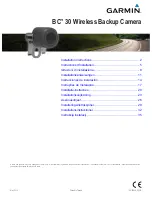
FAQs (Frequently Asked Questions)
scanning lines at the same time, thus distorting the picture.
Q:
What does the Refresh Rate mean for LCD?
A:
Unlike CRT display technology, in which the speed of the electron beam is swept
from the top to the bottom of the screen determines flicker, an active matrix display
uses an active element (TFT) to control each individual pixel and the refresh rate is
therefore not really applicable to LCD technology.
Q:
Will the LCD screen be resistant to scratches?
A:
A protective coating is applied to the surface of the LCD, which is durable to a
certain extent (approximately up to the hardness of a 2H pencil). In general, it is
recommended that the panel surface is not subject to any excessive shocks or
scratches. An optional protective cover with greater scratch resistance is also
available.
Q:
How should I clean the LCD surface?
A:
For normal cleaning, use a clean, soft cloth. For extensive cleaning, please use
isopropyl alcohol. Do not use other solvents such as ethyl alcohol, ethanol, acetone,
hexane, etc.
Q:
Can the Philips LCD Monitor be mounted on the wall or used as a touch panel?
A:
Yes. Philips LCD monitors have this optional feature. The standard VESA mount
holes on the back cover allows the user to mount the Philips monitor on any VESA
standard ARM or accessories. Touch panels are being developed for future
applications. Check with your Philips sales representative for more information.
RETURN TO TOP OF THE PAGE
Screen Adjustments
Q:
What is the FPadjust program on the CD-ROM?
file:///D|/My%20Documents/dfu/A9/english/190p6/safety/saf_faq.htm (3 of 8)2005-06-09 8:35:13 AM
















































